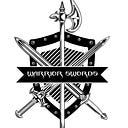Japanese Sword vs Chinese Sword: A Detailed Guide (Katana vs Jian)
Introduction
Swords have left an indelible mark on both Chinese and Japanese cultures, wielding significance in combat and artistic expression. From historical battles to modern cinema, these legendary blades have captured the imagination of audiences worldwide. This exploration delves into the fascinating histories and distinct characteristics of two iconic swords: the Jian of China and the Katana of Japan.
Brief History
Swords hold immense cultural and martial importance in China and Japan. Over centuries, these nations have honed their sword-making traditions, resulting in blades that embody their respective cultures. In China, the Jian has been revered for millennia as a symbol of honor, authority, and martial prowess. Meanwhile, during Japan’s feudal era, the Katana emerged as a symbol of Japanese craftsmanship and the Bushido code, the moral compass of the samurai.
Introduction to Katana and Jian
The Katana reigns supreme as the most recognizable Japanese sword, distinguished by its curved blade and single sharp edge. Renowned for its strength, beauty, and elegance, the Katana embodies the spirit of the samurai warrior. In Chinese martial arts, the Jian earns the title of the “gentleman of weapons” due to its straight, double-edged blade and emphasis on graceful movements. This versatile and historically significant sword is deeply rooted in Chinese culture.
Design: Contrasting Features
Katana
- Blade: The Katana’s gently curved blade facilitates smooth slashing motions and superior cutting ability. Its single-edged design optimizes its strength for powerful strikes while maintaining control and accuracy.
- Construction: Traditional Japanese swordsmiths employ a specific technique involving uneven heating and cooling to create a distinct temper line on the blade, known as the hamon. This process enhances the blade’s edge sharpness and overall strength. The Katana is often meticulously crafted from multiple layers of high-carbon steel, ensuring its durability.
- Tsuba (Hand Guard): The tsuba, or hand guard, serves a dual purpose: protecting the wielder’s hand during combat and enhancing the sword’s balance and aesthetics. Tsuba designs range from simple to intricately detailed, drawing inspiration from nature, mythology, or historical events, adding a unique touch to each sword.
- Tsuka (Handle): Traditionally, the Katana’s tsuka (handle) is wrapped in silk or leather using a diamond-shaped pattern, providing a secure and comfortable grip. It may also incorporate decorative elements like menuki (ornamental grip ornaments) and samegawa (ray skin).
- Saya (Scabbard): The Katana’s saya, crafted from wood and lacquered for protection and aesthetics, houses the blade. Some saya feature elaborate carvings, lacquerwork, or metal components like the koiguchi (scabbard mouth), kurikata (scabbard attachment for suspension), and kojiri (scabbard tip).
Jian
- Blade: In contrast to the Katana’s curve, the Jian boasts a straight blade from tip to handle, ideal for precise thrusting and stabbing techniques. Its double-edged design allows for both offensive and defensive maneuvers, incorporating cutting and thrusting motions.
- Construction: Jian swords are typically forged from high-quality materials like high-carbon steel or folded steel, ensuring their resilience and flexibility in combat. Skilled swordsmiths utilize specialized techniques to bolster the blade’s strength and maintain its edge sharpness for optimal performance.
- Guard: Compared to the ornate tsuba of the Katana, the Jian’s guard prioritizes a minimalist design, often featuring geometric shapes or understated motifs.
- Functional Role: While less elaborate, the Jian’s guard effectively protects the hand from enemy attacks while enabling swift blade transitions during combat.
- Jiāo (Scabbard): Traditionally crafted from wood, bamboo, or leather, the Jian’s scabbard, called jiāo in Chinese, safeguards the blade while allowing for a quick draw. Some scabbards incorporate decorative carvings.
Combat
Katana: Katana combat emphasizes delivering powerful, decisive strikes. Fighters utilize techniques focused on wielding the katana with two hands for greater control and force, often employing powerful single cuts. In close-quarters combat, the Katana is frequently paired with a shorter wakizashi sword, facilitating swift and lethal maneuvers.
Jian: Jian combat is a versatile art form encompassing various fighting styles that integrate thrusts, cuts, and agile movements. Precision and agility are paramount, with fighters often wielding the Jian in one hand for swift attacks and defensive maneuvers. The Jian’s adaptability extends to pairing with other weapons like daggers or shields, enhancing its effectiveness in diverse combat scenarios
